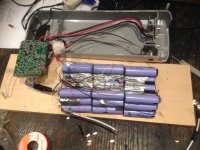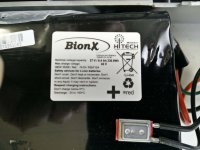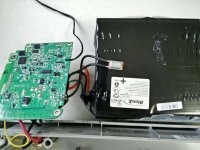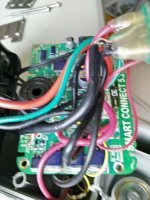I don't know. I've never had access to one of the new ones to tear down and analyze. If you have a dead one laying around, I'll pay shipping...
In general, the answer should be "yes" - as long as you hook in between the BMS and the actual pack, it will charge the cells.
The question becomes, "How smart is the BMS, and how cranky is it?" A suitably dumb one won't care. It'll balance when it can, keep the cells within their voltage range, and not do much else. Unfortunately, BionX seems to have gone "very very smart" on their new packs, such that they're CANBus accessible over the internet, and there's a lot of remote diagnostics BionX can do to determine if a pack is warranty-replaceable or not (and if it is, they just brick it remotely and say, "Recycle it, we'll ship you a new one"). So it's entirely possible that it could detect a state-of-charge change without the current flowing through the BMS, and get really unhappy.
So, my answer, sadly, comes down to "I don't have enough information to know if you'll be able to get away with this or not."
In general, the answer should be "yes" - as long as you hook in between the BMS and the actual pack, it will charge the cells.
The question becomes, "How smart is the BMS, and how cranky is it?" A suitably dumb one won't care. It'll balance when it can, keep the cells within their voltage range, and not do much else. Unfortunately, BionX seems to have gone "very very smart" on their new packs, such that they're CANBus accessible over the internet, and there's a lot of remote diagnostics BionX can do to determine if a pack is warranty-replaceable or not (and if it is, they just brick it remotely and say, "Recycle it, we'll ship you a new one"). So it's entirely possible that it could detect a state-of-charge change without the current flowing through the BMS, and get really unhappy.
So, my answer, sadly, comes down to "I don't have enough information to know if you'll be able to get away with this or not."






